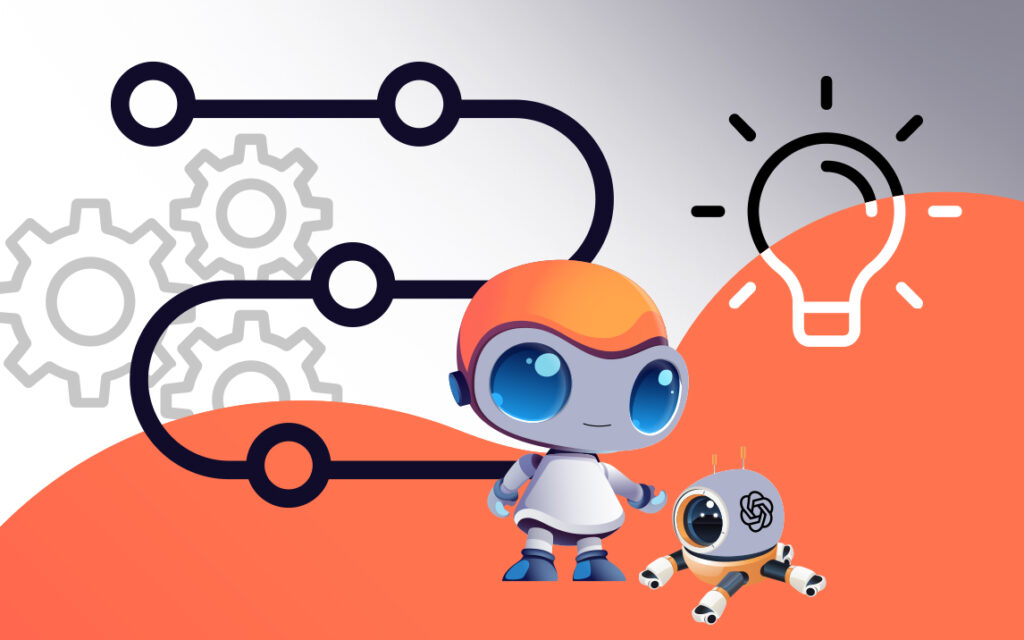Highlight

Successful together – our valantic Team.
Meet the people who bring passion and accountability to driving success at valantic.
Get to know usJanuary 9, 2025

Artificial Intelligence (AI) has long been omnipresent in the world of e-commerce. But (how) can AI actually help achieve strategic goals and increase profitability? For an international B2B company, valantic demonstrated tangible business value in a Proof of Concept (PoC) and created a blueprint for successful transformation into an AI-supported organization.
In this interview, project manager Sarina Hermann tells us how the integrated team advanced value-adding use cases and what makes her particularly proud of the project.
In the initial discussion, the client directly asked about our experiences and competencies in the field of Artificial Intelligence, but had no concrete idea whether and how AI could add value to their business processes and goals. We therefore proposed a GenAI Discovery – a kind of workshop where we work with the client to identify which use cases truly merit AI implementation, what it costs, and what prerequisites must be met to implement the most promising use cases.
The field of AI is evolving very quickly and the regulatory landscape is constantly changing. Therefore, developments and implementations need to be proactively accompanied. If you don’t want to be left behind, you need to gain experience with the technology, build up the relevant skills and prepare your organization for working with AI. For this, the GenAI Discovery creates an ideal basis:
Together with the client, we develop an AI roadmap as a guide to identify value-adding use cases and to work out approaches for their implementation. We also establish initial guidelines, both external and internal, that ensure AI applications comply with legal requirements from a compliance, data protection and IT security perspective now and in the future and are based on best practices.
Basically, we look at the short-, medium- and long-term goals of the company and include all levels that are critical to success: business, customer experience (CX), organization and technology. Initially, it was about setting a strategic framework. We wanted to gain an overview of the requirements and a sense for the implementation complexity, the development effort and associated costs, as well as the optimization possibilities and limits. The roadmap was also intended to help allocate internal resources and budgets and determine the need for external expertise.
Our analysis of the status quo revealed operational obstacles that stood in the way of efficiency and the desired growth of the company. The overarching goal was therefore to increase efficiency and profitability by optimizing internal processes, but also to promote sustainable growth through new offerings that bring competitive advantages in the short to medium term. For us and the client, it quickly became clear that generative AI could help achieve these strategic goals and overcome current challenges.
When evaluating potential use cases, the expected business value and feasibility are key criteria. In this case, our focus was on optimizing process costs: What does it specifically cost in time to complete certain tasks? In collaboration with the client’s specialist departments, we made estimates of the cost savings possible through AI, automation or partial automation, and compared these to the expected implementation costs.
Regarding feasibility, we look at what requirements must be met to implement the use cases and what capabilities the company already has. The use cases must fit within the external and internal guidelines of the organization. This is why we also look at the maturity level of the system landscape and the data quality during discovery, thus assessing the tech and data capabilities.
In a detailed examination of critical processes, we saw great potential in the use of internal know-how. This includes, for example, internal company guidelines, best practices for processes and use cases, as well as solutions for specific challenges. Specifically, it was about the efficient use of documents that serve as guides for different processes and issues for employees.
The documents were scattered across different systems, which made it difficult to search for the required information. We saw up to 70 percent savings potential in terms of time and costs for this task. Because this hypothesis was based on estimates, we proposed to the client to test this use case as a proof of concept – as an intermediate step before implementation and rollout.
Besides the foreseeable business value, the existing capabilities and manageable scope were two strong arguments for starting with this use case. The necessary technologies were already available: valantic had previously set up a ChatGPT model based on our in-house AI assistant vally and adapted it for the client in the appropriate look and feel. Also, in many cases, standardized and structured data were already available, which compressed the project scope. Thus, we were able to start with the PoC without much effort.

For compiling, extracting, elaborating and assigning the documents, including the associated attachments and sources, the support of the departments was very important. We fed the GenAI model with the existing information and optimized it step by step. With the help of AI, we were able to establish connections between the documents, so that now you can specifically search for or ask for needed answers, e.g., ‘What are our guidelines on expense reporting?’. The AI extracts relevant information from all available documents and summarizes it in an answer.
Our estimate of up to 70 percent more speed and efficiency was even exceeded in internal tests. And not only that: The quality of the outcomes has also significantly improved. Overall, the internal users were also much more satisfied with the use of the intuitive AI tool.
Thanks to the integrated team and the excellent cooperation with the specialist departments of the company, we were able to implement the project not only on time but also within budget. Additionally, we created a kind of blueprint with the PoC for implementing further value-generating use cases. Already during the integration, we began building missing capabilities in the areas of data, processes, technologies and organization. These are crucial for sustainable implementation within the organizations and the desired tech ownership.
Are you still looking for the right starting point and path for implementing value-creating use cases and the successful transformation to an AI-supported organization? Then let’s get started together!

Your contact to us
Sarina Hermann
Lead Consultant • Concepts & Requirement
sarina.hermann@cec.valantic.com
+49 172 8129780
Don't miss a thing.
Subscribe to our latest blog articles.